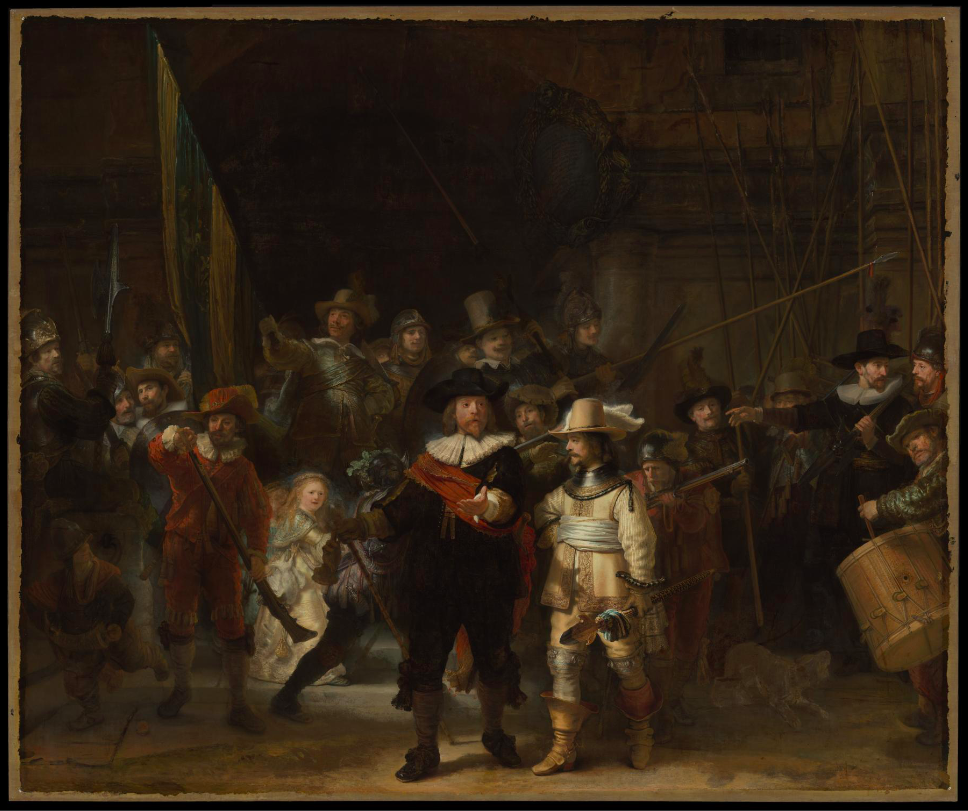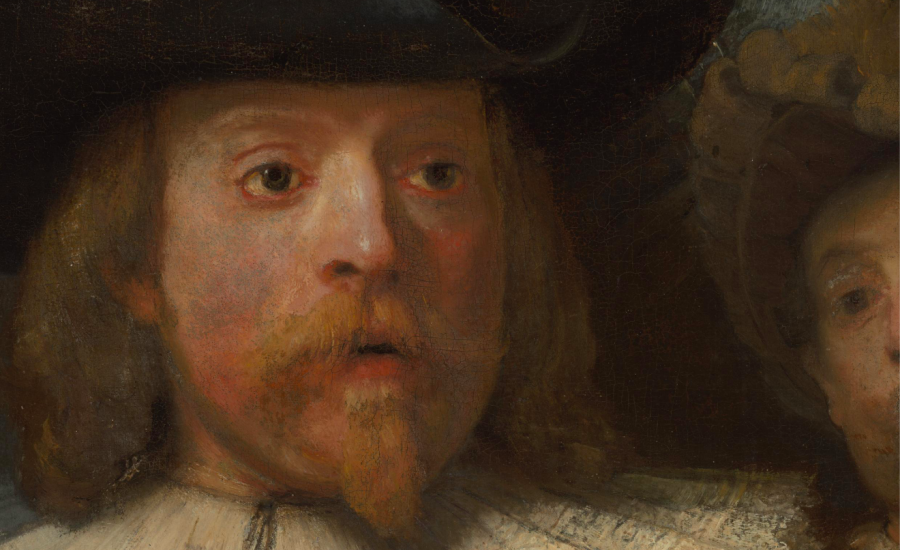
What makes great paintings great? Unless you can see them for yourself—and be awed, or not, by their physical presence—the answers will generally come second-hand, through the words of art historians, critics, curators, gallerists, etc. We can study art in reproduction, but seeing, for example, the paintings of Rembrandt van Rijn in the flesh presents an entirely different aesthetic experience than seeing them on the page or screen.
Lately, however, the situation is changing, and the boundaries blurring between a virtual and an in-person experience of art. It’s possible with digital technology to have experiences no ordinary museum-goer has had, of course—like walking into a VR Salvador Dalí painting, or through a simulated Vermeer museum in augmented reality.
But these technological interventions are novelties, in a way. Like famous paintings silkscreened on t‑shirts or glazed on coffee mugs, they warp and distort the works they represent.

That is not the case, however, with the latest digital reproduction of Rembrandt’s grandest and most exclusive painting, The Night Watch, a 44.8 gigapixel image of the work that the museum has “released online in a zoomable interface,” notes Kottke. “The level of detail available here is incredible.” Even that description seems like understatement. The image comes to us from the same team responsible for the painting’s multi-phase, live-streamed restoration.
The Rijksmuseum’s imaging team led by datascientist Robert Erdmann made this photograph of The Night Watch from a total of 528 exposures. The 24 rows of 22 pictures were stitched together digitally with the aid of neural networks. The final image is made up of 44.8 gigapixels (44,804,687,500 pixels), and the distance between each pixel is 20 micrometres (0.02 mm). This enables the scientists to study the painting in detail remotely. The image will also be used to accurately track any future ageing processes taking place in the painting.
The hugely famous work is so enormous, nearly 12 feet high and over 14 feet wide, that its figures are almost life-size. Yet even when it was possible to get close to the painting—before COVID-19 shut down the Rijksmuseum and before Rembrandt’s masterwork went behind glass—no one except conservationists could ever get as close to it as we can now with just the click of a mouse or a slide of our fingers across a trackpad.

The experience of seeing Rembrandt’s brushstrokes magnified in crystalline clarity doesn’t just add to our store of knowledge about The Night Watch, as the Rijksmuseum suggests above. This astonishing image also—and perhaps most importantly for the majority of people who will view it online—enables us to really commune with the materiality of the painting, and to be moved by it in a way that may have only been possible in the past by making an exclusive, in-person visit to the Rijksmuseum without a tourist in sight. (For most of us, that is an unrealistic way to view great art.)
See the huge photographic reproduction of The Night Watch here and zoom in on any detail until you can almost smell the varnish. This image represents the painting in the current state of its restoration, an effort that the museum previously opened to the public by live streaming it. Yet, the work has stopped for the past two months as conservationists have stayed home. Just yesterday, the team’s onsite research began again, and will continue at least into 2021. This huge photo of the painting may be the closest almost anyone will ever get to the canvas, and the only opportunity for some time to approximately feel its monumental scale.
For anyone interested, there’s also a 10 billion pixel scan of Vermeer’s masterpiece Girl with a Pearl Earring. Explore it here.
Related Content:
What Makes The Night Watch Rembrandt’s Masterpiece
Walk Inside a Surrealist Salvador Dalí Painting with This 360º Virtual Reality Video
Experience the Van Gogh Museum in 4K Resolution: A Video Tour in Seven Parts
Josh Jones is a writer and musician based in Durham, NC. Follow him at @jdmagness


Whenever I look at such masterpieces, I think, wow, how many months it would take for me to do something like this in Photoshop. Provided I even know how to draw.
And centuries ago, a guy did this by hand. Inch by inch.